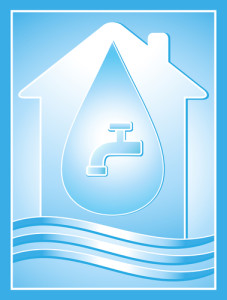By Jack Hawks
Published in the Contra Costa Times
Californians are doing an outstanding job conserving water, reducing urban water use by nearly 26 percent during the last seven months of 2015, compared with the same period in 2013, exceeding Gov. Brown’s 25 percent reduction mandate. California’s investor-owned water utilities, together serving approximately 6 million people, are partnering with their customers to achieve those savings. The State Water Resources Control Board (“SWRCB”) has recognized many of our members among the state’s water conservation standouts.
The severity of this historic drought has required extraordinary conservation measures to ensure adequate water supplies. As SWRCB Chair Felicia Marcus said last spring, “This is the drought of the century, with greater impact than anything our parents and grandparents experienced, and we have to act accordingly.” Given the uncertainties with the weather, the SWRCB made the prudent, responsible decision on February 2nd to extend the emergency conservation regulations (with appropriate adjustments for local climates, population growth, and drought resilient supply investments) through October 2016.
But the level of mandated conservation has come with costs—to customers and to water utilities responsible for serving a safe, reliable water supply.
For customers, the reductions have hit pocketbooks hard with drought surcharges, penalty rates, and general rate increases. The drought and mandatory reductions have also devastated trees and landscapes. In fact, Governor Brown proclaimed a state of emergency for trees, lamenting that drought conditions and resulting bark beetle infestation have caused the “worst epidemic of tree mortality” in the state’s modern history.
For many water providers across California, reductions have caused dramatic losses in revenues needed for infrastructure investments and fixed cost recovery (costs incurred regardless of the amount of water used – representing about 70 percent of customer bills), plus higher costs for conservation programs, public outreach, enforcing water restrictions, and developing new and supplemental water supplies. As a result, municipal and investor-owned water utilities alike have raised rates. A Fitch Ratings survey reveals that 78 percent of California municipal water agencies have or plan to adjust rates to offset losses from mandatory conservation.
The SWRCB made another sound decision on February 2 when it directed staff to “monitor and evaluate snowpack, reservoir storage levels, and other factors and report back to the Board in March and April, and if conditions warrant, bring a proposal for rescission or adjustment of this regulation to the Board no later than the second meeting in May.”
That timeline is critical because, if El Niño storms return and drought conditions further improve by April, urban water suppliers must be able to move quickly to adjust the restrictions in their water shortage contingency plans. Otherwise, credibility issues with customers (“why must we pay drought surcharges and penalties when it has been raining and snowing?”) may overshadow successful drought customer relations programs.
We do not suggest current prohibitions on wasteful water-use practices should be relaxed. On the contrary, they should become a permanent fixture of Urban Water Management Plans. The financial and rate consequences for customers of the mandated reductions should be addressed quickly, though, if conditions do improve. Water suppliers welcome the opportunity to work with the state officials to create a responsible proposal and adopt specific, objective criteria for easing water use mandates – but only if conditions improve.
The California Water Association recently proposed an approach that is equitable and could be implemented in concert with demonstrated conditions and customer expectations. Specifically, water conservation standards for each water supplier could be reduced in proportion to improved snowpack and reservoir conditions, compared with the levels in April 2015. For example, if the April 2016 snowpack and reservoir storage levels improve by 50 percent and 20 percent, respectively (an average 35 percent improvement), then the conservation standard for each water provider could be reduced by 35 percent. The logic for an approach like this, or something similar, is simple: The original 25 percent statewide reduction mandate was determined under the worst drought conditions in history, so a commensurate decrease in the statewide average, based on improved water supply conditions, is rational and reasonable.
California’s investor-owned water utilities are committed to conservation both during this drought emergency and beyond, and our customers have performed admirably. Developing a timely plan, regardless of the weather, will acknowledge the severe costs of this drought emergency to both water providers and customers, and will help avoid both an erosion of public trust and decreased motivation to conserve, which is sure to happen if the El Niño storms return.
Jack Hawks is Executive Director of the California Water Association (CWA), which represents the interests of approximately 108 investor-owned public utilities that are regulated by the California Public Utilities Commission. These water companies strive to provide high-quality water utility services to customers throughout California. CWA provides a forum for sharing best management practices; a means of promoting sound water policy by legislators and regulatory agencies; and opportunities for educating the public on the protection and efficient use of water resources.





